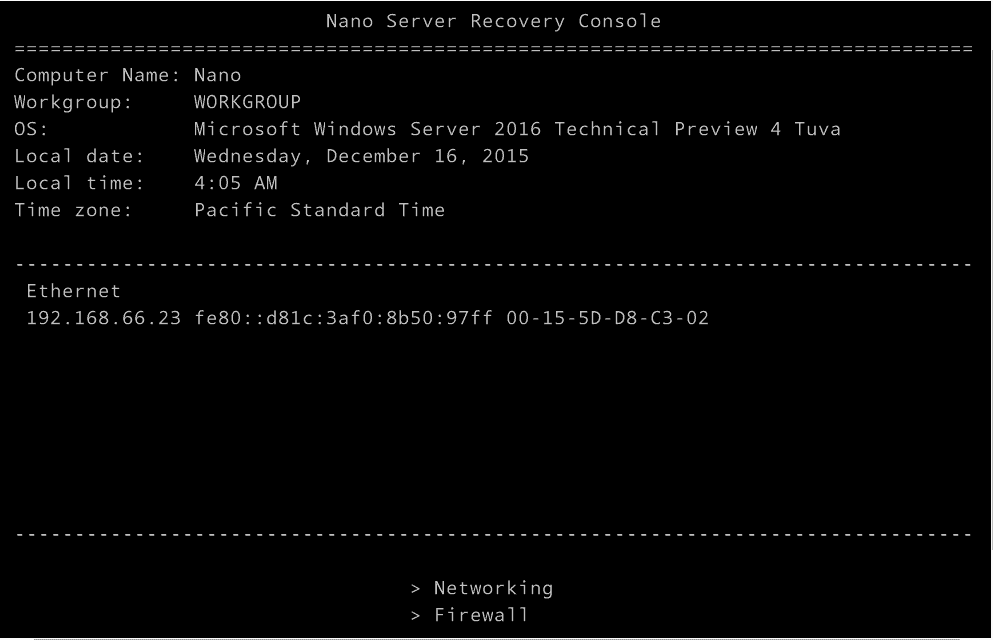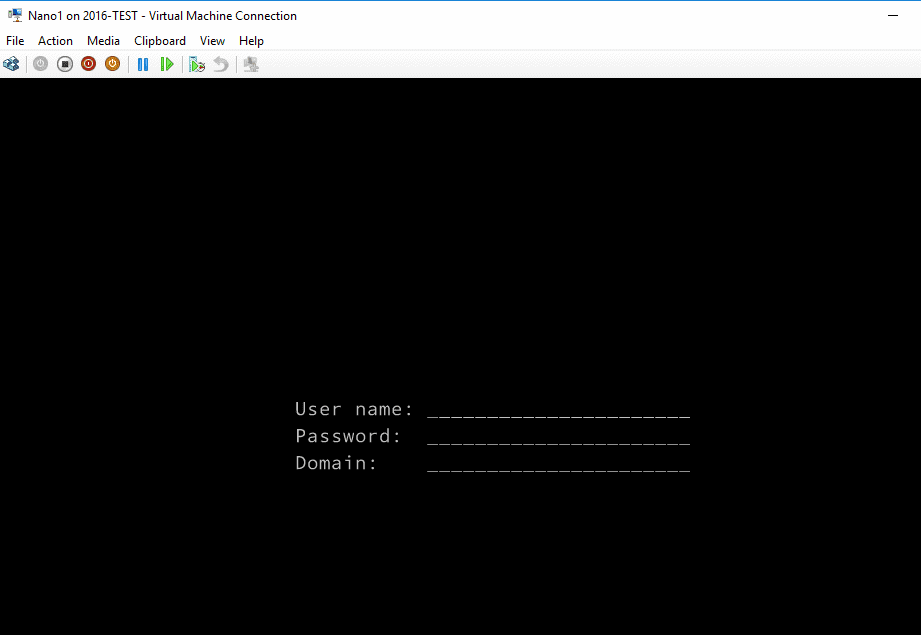
By this time you might have noticed that Windows Server 2016 has quite a lot of new features and functions.
If you haven’t yet, check out my post on Hyper-V as well as failover clustering. And, if you didn’t know it yet, Windows Server 2016 is going to be licensed differently.
Something completely new in Windows Server 2016 is the Nano Server.
What is Nano Server?
It’s a server that is really small (to avoid a tautology). The Nano Server is a direction Microsoft has been working towards for years. Essentially, it’s a stripped down install of Windows that only gives you the basics you need to perform roles (and NOTHING else). This all started with Windows Server Core, and Nano Server is the next step of that.
Nano Server ups the ante by taking away even the command prompt on the server. It cannot be managed locally — not even with scripts. It’s exclusively managed through remotely through PowerShell, WMI, WinRM, and Emergency Management Services (a serial cable to the server, something you probably haven’t heard of since Windows 2003). Don’t worry, if you were big enough to devote the time to learning to use Server Core, it’s still around. This is a fully separate option.
Why Nano Server?
So, the next question people normally ask is, “Why? Why am I putting myself through the woes of managing an OS completely remotely, which has a limited subset of features?”
The main reason is for the same that VMware has been touting for years about why ESXi is so amazing and secure: less code is less attack surface and less room for bugs and problems. VMware has attacked Microsoft for years about how ‘bloated’ their hypervisor was. Even though the actual hypervisor was a small part of the size of the Windows install, it had a lot of drag of features and user interface.
Indeed, Nano Server is small (surprise). After spinning up a VM in a Hyper-V 2016 lab, the memory demand was only 153 MB. Nope, no missing zero there; Nano Server runs on the same amount of RAM as desktops did back in the early 2000s. As for storage, the finished virtual hard disk (VHD) for my newly deployed server is about 475 MB. Once again, no missing zero there — less storage than computers had back in the early 90s.
This is a radical departure from desktop experience installs of Windows that use around 20 GB from base install. Granted, both of the numbers above are a base install that’s on the network but has no roles or features installed, BUT it’s impressive nonetheless. It’s not much larger than an installed ESXi image, but with the capability to run several roles, which brings us to the next question…
What Can Nano Servers Even Do?
Well, not everything, but a surprising amount: Hyper-V, failover clustering, file server, DNS, IIS. You’ll notice something in particular missing from that list that you may have expected… no you can’t run a domain controller on it. Why not? Look at their targeted workloads, they’re all large scale-out functions. Hundreds of Hyper-V servers with failover clustering on them, hundreds of IIS servers… it’s made to trim some fat from large, scale-out installs.
And, indeed, some simple math shows the economies of scale. That clean install mentioned earlier of Server 2016 uses approximately 20GB of hard disk space and 2.2 GB of RAM sitting idle. That’s the same amount of hard disk space as 43 nano servers and the same RAM as 14. If you’re deploying thousands of servers, that can quickly add up into a massive savings.
You might be wondering, “Should I REALLY care though? We never did anything with Server Core.” Time for my consultant answer: “it depends.” While the idea of a more secure, smaller footprint server is great, it does require a decent amount of work on your part to administer. Even deploying a Nano Server is counter to what everyone has grown used to over the years: typically, you’d build the server image through PowerShell, then just attach a VHD to the physical or virtual server. There’s no ISO to pop in a drive, no USB stick, because it’s all created through PowerShell, which was the first sign of the true paradigm shift of this feature. However, if you’re doing large, scale-out deployments, Nano could be a golden ticket for you in resource savings and scripted management.

